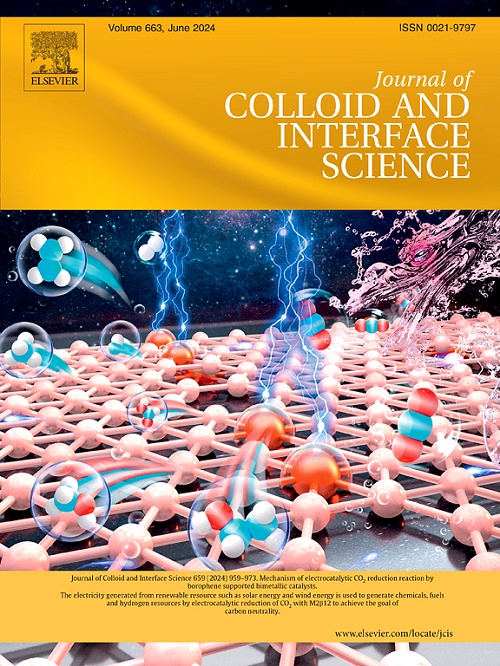Fast charge separation from synergistic effect of plasma Bi metal and BiOCl/SrTiO3 S-scheme heterojunction promotes NO deep removal
IF 9.4
1区 化学
Q1 CHEMISTRY, PHYSICAL
引用次数: 0
Abstract
The catalytic conversion of nitrogen oxides (NOx) to non-toxic products has emerged as a critical strategy for air pollution control under stringent emission regulations. Photocatalytic NOx removal performance highly depends on the transmission of photogenerated electrons and the amount of reactive oxygen species (ROS) generated. Herein, the Bi/BiOCl/SrTiO3 heterostructure photocatalyst was prepared by a simple in situ synthesis method to address the limitations of conventional NOx removal systems. Due to the synergistic effect of bismuth (Bi) surface plasmon resonance (SPR) and the built-in electric field in BiOCl/SrTiO3 S-scheme heterojunction, Bi/BiOCl/SrTiO3 showed strong light absorption ability and high charge separation efficiency, with the highest NO removal efficiency reaching 70 %. The enhanced electronic interaction between Bi and BiOCl/SrTiO3 induced Bi-O covalent bonds with the BiOCl layer to facilitate fast charge separation, promoting the rapid transfer of interfacial photogenerated carriers, this process induces the activation of O2 and H2O to form reactive oxygen species (ROS) to promote the oxidative removal of NO. This study provides new insights into the development of effective photocatalysts with fast charge separation by synergistic metal active sites and built-in electric field of heterojunction for air pollutant purification.

等离子体Bi金属与BiOCl/SrTiO3 S-scheme异质结协同作用下的快速电荷分离促进了NO的深度去除
在严格的排放法规下,氮氧化物(NOx)催化转化为无毒产品已成为控制空气污染的关键策略。光催化脱除NOx的性能高度依赖于光生电子的传输和活性氧(ROS)的生成量。本文采用原位合成的方法制备了Bi/BiOCl/SrTiO3异质结构光催化剂,以解决传统脱硝系统的局限性。由于BiOCl/SrTiO3 S-scheme异质结中铋(Bi)表面等离子体共振(SPR)与内置电场的协同作用,Bi/BiOCl/SrTiO3表现出较强的光吸收能力和较高的电荷分离效率,最高的NO去除率可达70 %。Bi与BiOCl/SrTiO3之间增强的电子相互作用诱导Bi- o与BiOCl层形成共价键,促进电荷的快速分离,促进界面光生载体的快速转移,这一过程诱导O2和H2O的活化形成活性氧(ROS),促进NO的氧化去除。该研究为开发利用协同金属活性位点和内置异质结电场实现快速电荷分离的高效光催化剂净化空气污染物提供了新的思路。
本文章由计算机程序翻译,如有差异,请以英文原文为准。
求助全文
约1分钟内获得全文
求助全文
来源期刊
CiteScore
16.10
自引率
7.10%
发文量
2568
审稿时长
2 months
期刊介绍:
The Journal of Colloid and Interface Science publishes original research findings on the fundamental principles of colloid and interface science, as well as innovative applications in various fields. The criteria for publication include impact, quality, novelty, and originality.
Emphasis:
The journal emphasizes fundamental scientific innovation within the following categories:
A.Colloidal Materials and Nanomaterials
B.Soft Colloidal and Self-Assembly Systems
C.Adsorption, Catalysis, and Electrochemistry
D.Interfacial Processes, Capillarity, and Wetting
E.Biomaterials and Nanomedicine
F.Energy Conversion and Storage, and Environmental Technologies

 求助内容:
求助内容: 应助结果提醒方式:
应助结果提醒方式:


